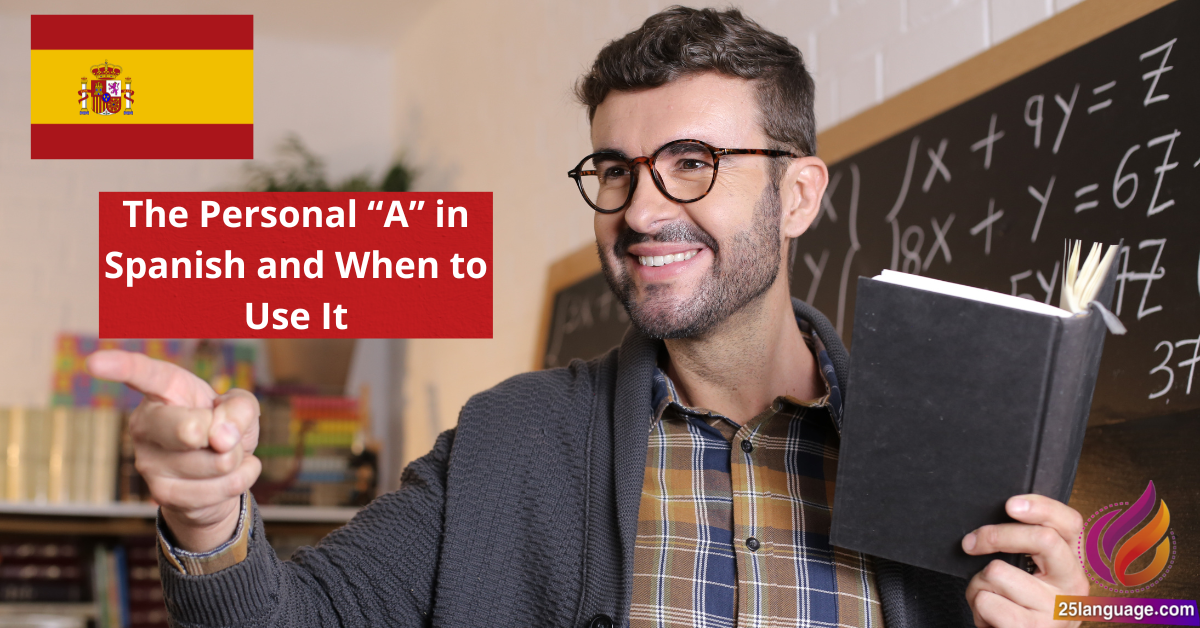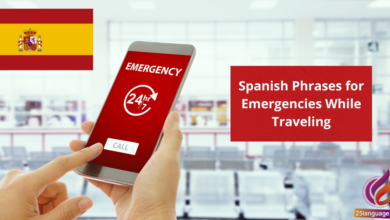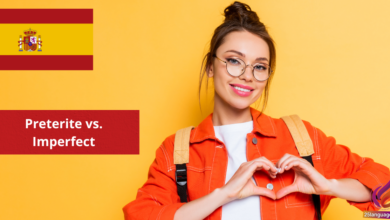The Personal “A” in Spanish and When to Use It

Have you ever wondered why Spanish speakers say “a” before a person’s name when using verbs like “ver” (to see) or “invitar” (to invite)? Welcome to the fascinating world of the personal “a”! In this lesson,you’ll discover the importance of this unique grammatical feature,how it enhances clarity in sentences,and when to master its use. Get ready to elevate your Spanish interaction skills and delve into this essential aspect of the language!
Mastering the Personal A in Spanish for fluent Communication
The personal “a” is an essential component in spanish grammar that indicates the direct object of a verb when that object is a specific person or pet. Understanding when to use the personal “a” is crucial for fluent communication. It’s primarily used in two scenarios: when referring to a person or a domesticated animal.Such as, in the sentence “Veo a María”, which means “I see María,” the personal “a” is necesary before the name María since she is a specific individual. Conversely, if the object is not a specific person, as in “veo la casa” (“I see the house”), the personal “a” is not needed. Here are some key points to remember:
- The personal “a” is used before names of peopel: “Llamo a juan” (“I call Juan”).
- It is required before pets: “Amo a mi perro” (“I love my dog”).
- Do not use the personal “a” with non-specific or non-human objects: “necesito libros” (“I need books”).
| Spanish Example | Rule | English Translation |
|---|---|---|
| Veo a mis amigos | Use before specific people | I see my friends |
| Escucho a la profesora | Use before specific individuals | I listen to the teacher |
| Quiero adoptar a un gato | Use with pets | I want to adopt a cat |
| Veo el coche | Do not use before non-specific objects | I see the car |
Unlocking the Secrets of the Personal A: understanding Its Usage
In Spanish,the personal “a” is a unique grammatical feature that indicates the direct object of a verb when that object is a person or a specific animal. It is indeed used to clarify that the action is directed towards someone or something that deserves a certain respect or acknowledgment. The personal “a” is not translated into English but is an essential component that must be included for grammatical accuracy. For example:
- Veo a María. – I see María.
- Escucho a mi perro. – I listen to my dog.
There are specific rules governing when to use the personal “a.” It typically appears in the following scenarios:
- when the direct object is a person: Conozco a Juan. – I know Juan.
- When the direct object is a pet considered part of the family: Adoro a mi gato. – I adore my cat.
- When referring to a personified entity (like roles or titles): Vi a la doctora. – I saw the doctor (female).
| Spanish Example | rule | English Translation |
|---|---|---|
| Busco a mi hermana. | Direct object is a person | I’m looking for my sister. |
| Llame a su abogado. | Direct object is a person | I called your lawyer. |
| Adopte a un perro. | Direct object is a pet | I adopted a dog. |
Navigating the Personal A: Essential Guidelines and Examples
The personal “a” is a unique feature of the Spanish language that English speakers must learn to use correctly.It is primarily used before a direct object that is a person or pet, indicating that the action is directed towards a specific individual. The rules surrounding the use of the personal “a” can be summarized as follows:
- It is used when the direct object is a specific person or group of people.
- It is also used with pets when they are treated affectionately.
- The personal “a” is not used before inanimate objects or abstract nouns.
For example, in the sentence Veo a María (I see María), the “a” signals that María is the direct object of the verb “ver.” Similarly, in Escucho a mi perro (I listen to my dog), the personal “a” highlights the affectionate relationship between the speaker and the pet. In contrast, you would say Veo la casa (I see the house) without the personal “a” since “casa” is an inanimate object.
| spanish Example | Rule | English Translation |
|---|---|---|
| Veo a Pedro | Direct object is a person | I see Pedro |
| Escucho a mi gato | Direct object is a pet | I listen to my cat |
| Compro flores | No personal “a” needed for inanimate objects | I buy flowers |
Practical tips for the Effective Use of the Personal A in Spanish
the personal “a” is a unique grammatical feature in Spanish that serves as a marker indicating the direct object of a verb when that object is a specific person or a pet. It is indeed essential to remember that the personal “a” is used only before people or some personified beings, and it does not appear before inanimate objects. Here are some key points to remember:
- Used before direct objects that are people: Veo a Juan. (I see Juan.)
- Used with pets: Quiero a mi perro. (I love my dog.)
- Not used for inanimate objects: Veo la casa. (I see the house.)
| Spanish Example | Rule | English Translation |
|---|---|---|
| Escucho a mi hermana. | Direct object (person) | I listen to my sister. |
| visito a los abuelos. | Direct object (people) | I visit my grandparents. |
| Quiero a mis amigos. | Direct object (people) | I love my friends. |
| Compro flores. | No personal “a” for inanimate objects | I buy flowers. |
Wrapping Up
Conclusión: La “A” Personal en Español y Cuándo Usarla
¡Enhorabuena! Has llegado al final de nuestra lección sobre la “a” personal en español. Hoy hemos explorado cómo este elemento único de la gramática española no solo es gramaticalmente necesario, sino que también añade matices y claridad a tus conversaciones. Recuerda que la “a” personal se utiliza cuando el objeto directo de la oración es una persona o un grupo de personas, y es essential para ofrecer un contexto claro.
A lo largo de la lección, vimos ejemplos concretos que te permiten identificar fácilmente cuándo usar esta preposición. Cada uso de la “a” personal te aporta la oportunidad de mejorar tu fluidez y hacer tus intercambios lingüísticos más naturales. No olvides practicar con oraciones de la vida cotidiana y a experimentar en tus conversaciones.
Ahora te animo a que apliques lo aprendido en tus conversaciones en español. Cada vez que utilices la “a” personal correctamente, estarás un paso más cerca de hablar con confianza y precisión. No dudes en volver a repasar este concepto y hacer ejercicios para reforzar tu comprensión. ¡Sigue practicando y no te desanimes! Con cada esfuerzo, estás construyendo una base sólida en el español.
¡Adelante, habla y practica! la próxima vez que uses un verbo que requiera la “a” personal, recuerda lo importante que es para conectar tus ideas correctamente. ¡Tú puedes hacerlo!





























